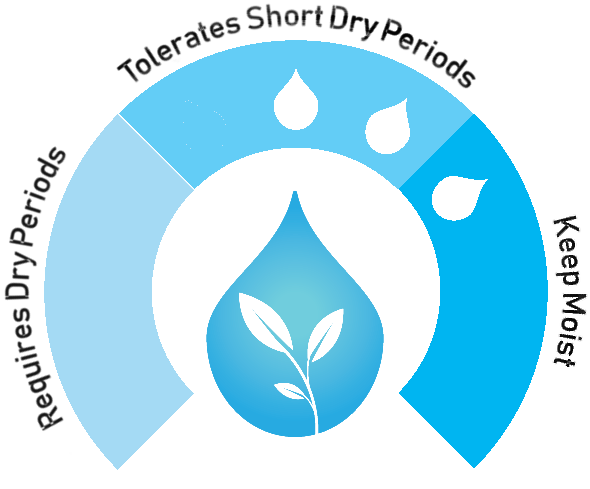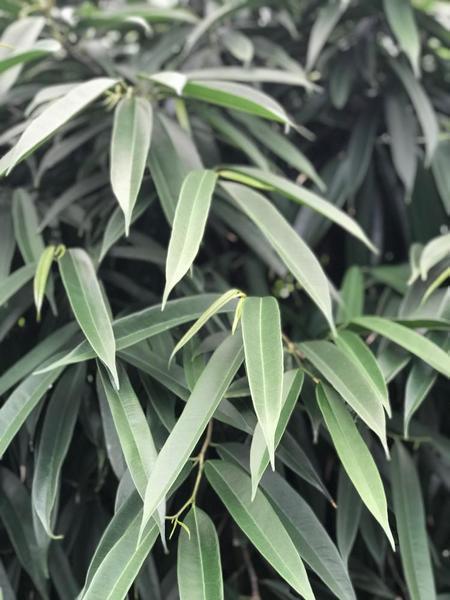
Numerous long thin tropical leaves fill out the canopy and give the Alli a whole lot of character. With adequate light and water, the Ficus Alli is a must when creating a healthy biophilic interior environment . Farm Life grows the Alli as a standard in 17 - 24 pots ranging in height from 7.5 to 11 feet tall.
The meters below indicate a range of light and tolerance to drought. The ranges are indicated by the little light bulbs and the small water drops.
Light Instructions

Water Instructions


Ficus whitefly has become a significant pest in South Florida. These insects spread rapidly and cause severe defoliation of many Ficus species. Adult flying whitefly lay eggs which eventually become an immobile nymph resembling scale insects. The nymph becomes a pupa from which the winged adult emerges. The pupa casing is not easily removed from the leaf, even if the insect within has been long dead. Farm Life takes great care to minimize whitefly impact on our Ficus trees, but these trees are grown outdoors for 5 years or more before they are ready for sale. At least 2 years are spent in an open field where perfect management is much more difficult. Once a Ficus tree has been harvested and brought back into our shadehouses, whitefly control can be much more precise. Given the persistence of the pupa casing, it is possible to find old casings stuck to the inner/older foliage of the trees. The outer newer foliage should be clean and free of whitefly. Whitefly will exploit the newest foliage first, which is a good way to determine if a whitefly infestation is ongoing, or if the whitefly pupae are old and dead. Live whitefly nymphs and pupae will be sealed, and have a pale yellow color. The pupae casings highly resemble certain species of scale insects, however scale is a very uncommon pest of the Ficus maclellandii even in the nursery environment. Mainspring GNL is a new systemic pesticide that is highly effective on whitefly and other insects. Applied as a drench, the active ingredient is translocated upward in the plant and will control whitefly insects. If whitefly adults are already present, the systemic action of Mainspring may not be fast enough to avoid major damage to the tree. In this case, a Mainspring drench, and a spray of horticultural oil once per week for 3 weeks should keep populations under control while the active ingredient of Mainspring is distributing though the tree. An alternative to oil that is effective on all stages of mites and whitefly is Savate.
Other Links
Whitefly damage and immobile nymph stage on Ficus maclellandii.
Greenhouse Whitefly Life Stages from Koppert Biological Systems
Ficus lyrata
Ficus maclellandii 'Alli'
Ficus maclellandii 'Amstel King'
